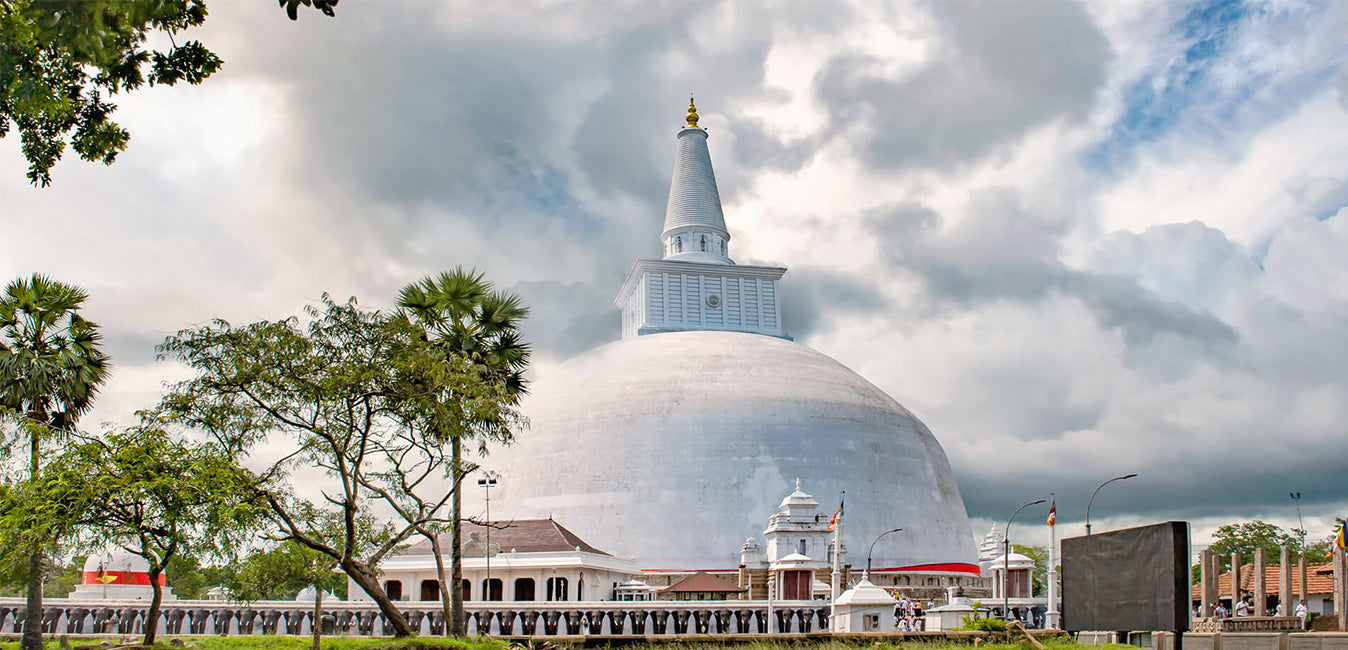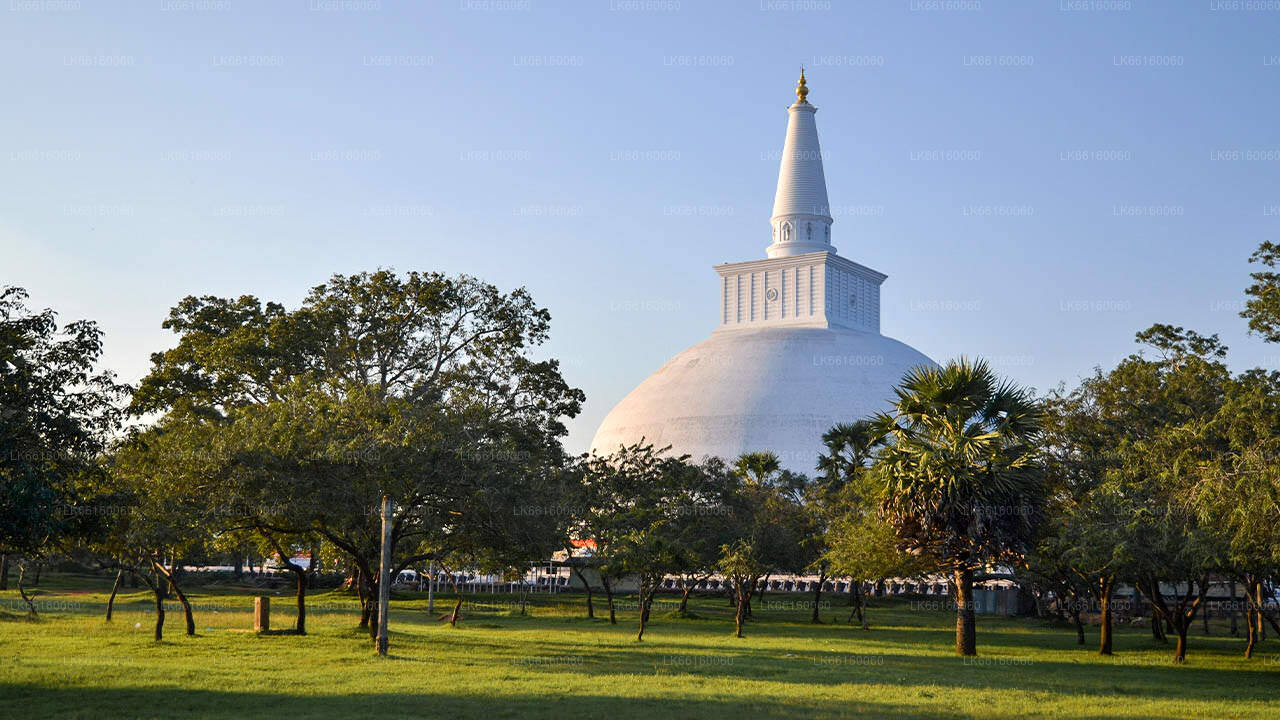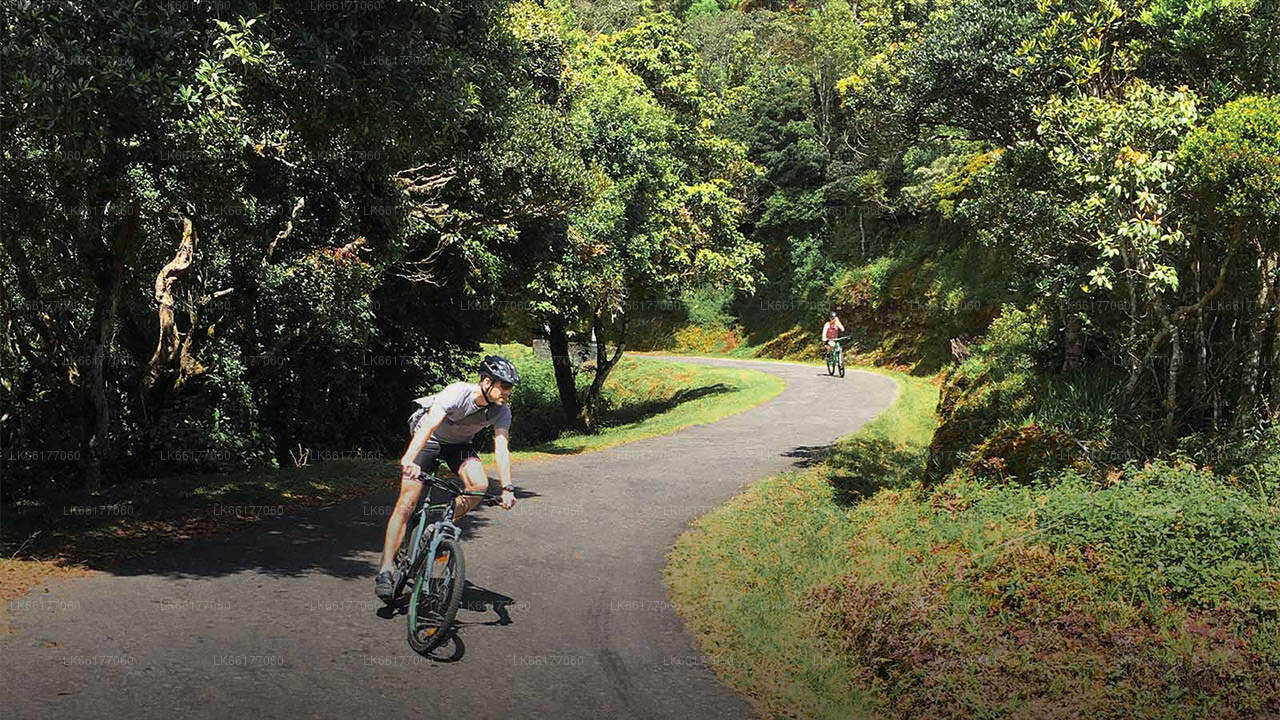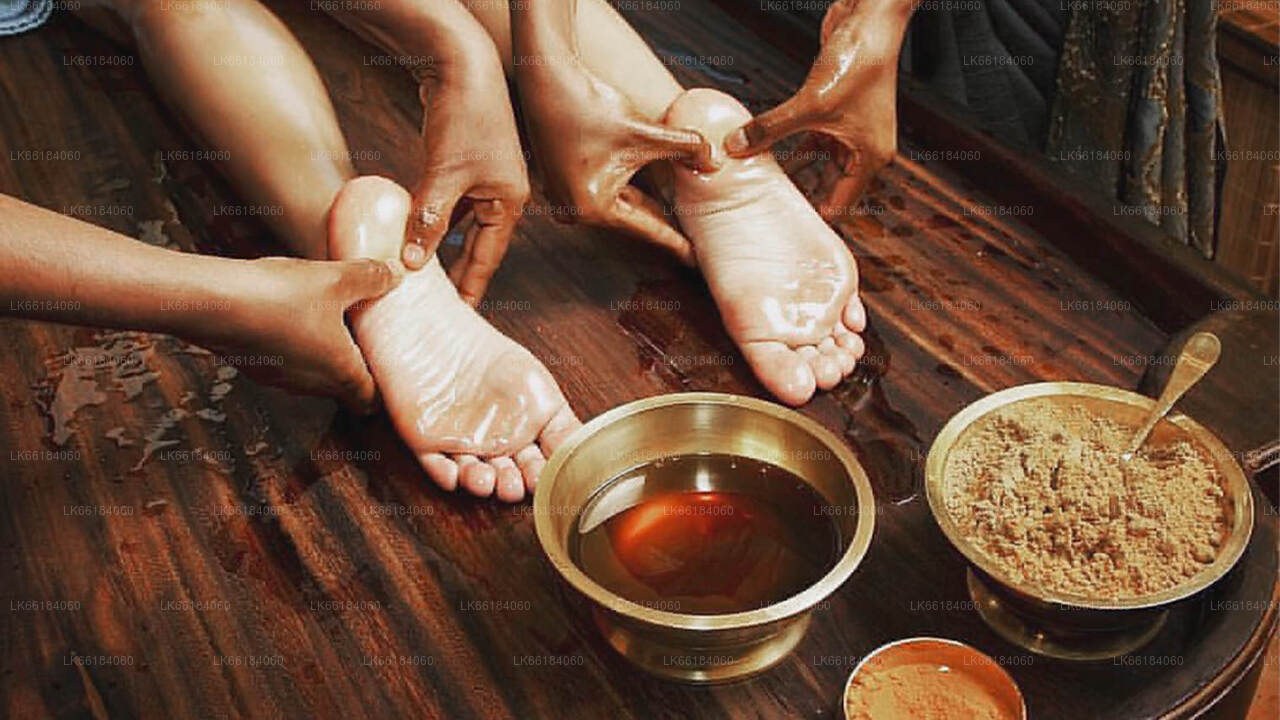
Anuradhapura-stad
Anuradhapura behoort tot de Noord-Centrale Provincie van Sri Lanka. Anuradhapura is een van de oude hoofdsteden van Sri Lanka, beroemd om zijn goed bewaard gebleven ruïnes van de oude Lankaanse beschaving. De stad, nu UNESCO-werelderfgoed, ligt 205 km ten noorden van de huidige hoofdstad Colombo in Sri Lanka.
Nuwara Wewa



Nuwara Wewa is an ancient reservoir located in Anuradhapura, in Sri Lanka’s North Central Province. Built around the 1st century BC by King Vattagamini (Valagamba), it is the largest tank (man-made lake) within the city. The reservoir lies on the eastern side of Anuradhapura and has formed a key part of the city’s historic layout.
The water body covers approximately 12 square kilometers and is supported by a bund (embankment) which controls its water level and flow. The surroundings include ancient ruins, shrines, and green embankments planted with trees. The ecosystem around the lake supports various bird species (including migratory birds), aquatic flora, and some small wildlife that rely on the wetland edges.
Visitors to Nuwara Wewa often enjoy walking or cycling along the bund, watching sunrise or sunset reflected in the calm waters, birdwatching, and photography. The reservoir also offers serene spots for relaxation and contemplation away from the busier parts of Anuradhapura. Being near several significant archaeological sites, it is often included in cultural and historic tours.
Nuwara Wewa is accessible throughout the year, though the period following the monsoon seasons yields fuller water levels and greener surroundings. Dry seasons reduce the inflow and may lower water level, altering the scenery somewhat. The site is easily reached by road from the center of Anuradhapura, with walking paths and small roads leading to its embankments. Best visiting times are early morning or late afternoon when temperatures are moderate and light is optimal.
Over het district Anuradhapura
Anuradhapura behoort tot de Noord-Centrale Provincie van Sri Lanka. Anuradhapura is een van de oude hoofdsteden van Sri Lanka, beroemd om zijn goed bewaard gebleven ruïnes van de oude Lankaanse beschaving. De stad, nu een UNESCO-werelderfgoed, ligt 205 km ten noorden van de huidige hoofdstad Colombo in Sri Lanka. In de heilige stad Anuradhapura en de omgeving bevinden zich een groot aantal ruïnes. De ruïnes bestaan uit drie soorten gebouwen: dagoba's, kloostergebouwen en pokuna (vijvers). De stad had enkele van de meest complexe irrigatiesystemen uit de oudheid, gelegen in de droge zone van het land. De overheid bouwde vele tanks om het land te irrigeren. De meeste burgers zijn Singalees, terwijl Tamils en Sri Lankaanse Moren in het district wonen.
Over Noord-Centrale Provincie
Noord-Centrale Provincie, de grootste provincie van het land, beslaat 16% van het totale landoppervlak van het land. De Noord-Centrale Provincie bestaat uit twee districten genaamd Polonnaruwa en Anuradhapure. Anuradhapura is het grootste district in Sri Lanka. Het gebied is 7.128 km². De Noord-Centrale Provincie heeft talloze mogelijkheden voor investeerders om hun bedrijven te starten, met name landbouw, agrarische industrieën en veeteelt. Meer dan 65% van de mensen van de Noord-Centrale Provincie is afhankelijk van basislandbouw en agrarische basisindustrieën. NCP wordt ook wel "Wew Bendi Rajje" genoemd omdat er meer dan 3.000 middelgrote en grote tanks in de provincie zijn gelegen. Sri Maha Bodiya, Ruwanweli Seya, Thuparama Dageba, Abayagiri-klooster, Polonnaruwa Rankot Wehera, Lankathilake zijn bang














